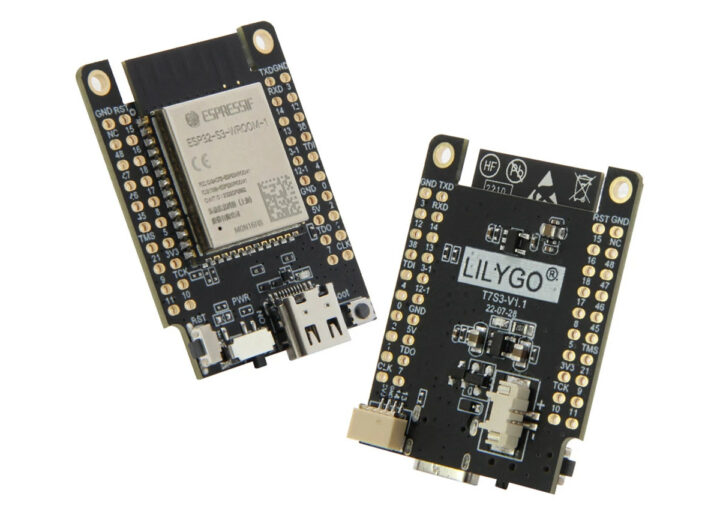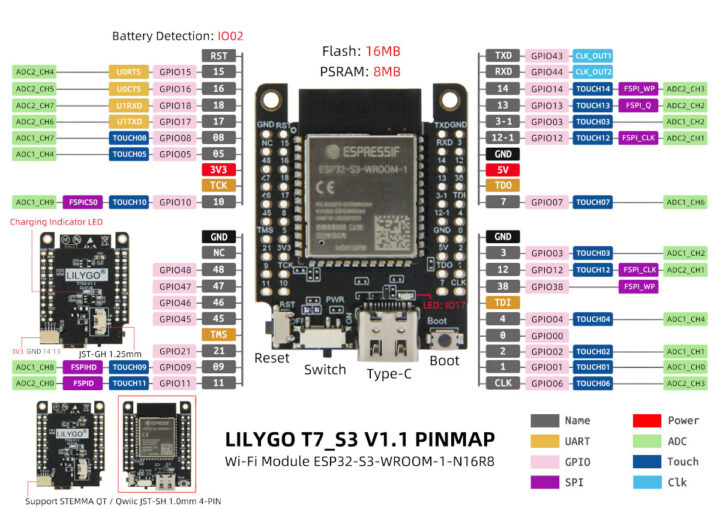LILYGO has launched another ESP32-S3 development board. The T7-S3 is equipped with an ESP32-S3-WROOM-1 module with 16MB flash, 8MB PSRAM, and a PCB antenna.
The board is fairly compact at 3.9×3.1 cm, can be powered through a USB-C port or a LiPo battery with charging support, and offers 40 through holes plus a Qwicc/QT I2C connector for expansion.
LILYGO T7-S3 specifications:
- Wireless module – ESP32-S3-WROOM-1-N16R8 module with
- SoC – Espressif Systems ESP32-S3 dual-core Xtensa LX7 processor @ up to 240 MHz integrating vector instructions for AI acceleration, 512 KB SRAM, WiFi 4 and Bluetooth 5.0 LE & Mesh connectivity
- Memory – 8MB PSRAM
- Storage – 16MB SPI Flash
- USB – USB Type-C port
- Expansion
- 2x 20-pin headers with up to 29x GPIOs, 20x ADC, UART, SPI, Touch interface, 5V, 3.3V, and GND
- 4-pin Qwiic/QT I2C connector
- Misc – User LED, charging LED (blue), reset and boot buttons, power on/off switch
- Power Supply
- 5V via USB-C port
- 2-pin JST connector for LiPo battery with charging support
- Dimensions – 3.9 x 3.1 x 0.6 cm
The company provides very basic instructions to get started with PlatformIO, the Arduino IDE, and MicroPython, as well as two simple Arduino sketches, one to enter deep sleep and the other to read battery voltage continuously and switch the user LED on and off if a button is pressed.
They are also showing 34.64uA power consumption in deep sleep mode with the battery connected (so around 3.7 to 4.2V) demonstrating the low power consumption of the ESP32-S3. I suppose it’s not too bad, but other ESP32-S3 boards have been shown to consume even less, and for example, the Unexpected Maker TinyS3 has been measured at 27.29 uA @ 4.2V using Nordic Semi’s Power Profiler Kit II for measurement.
LILYGO currently sells the T7-S3 for $11.98 with free shipping, but since Aliexpress 11.11 event is starting in about 2 days, the board will be offered for just $9.58 during the event, that’s provided it is still in stock at the time of the promotion…

Jean-Luc started CNX Software in 2010 as a part-time endeavor, before quitting his job as a software engineering manager, and starting to write daily news, and reviews full time later in 2011.
Support CNX Software! Donate via cryptocurrencies, become a Patron on Patreon, or purchase goods on Amazon or Aliexpress






